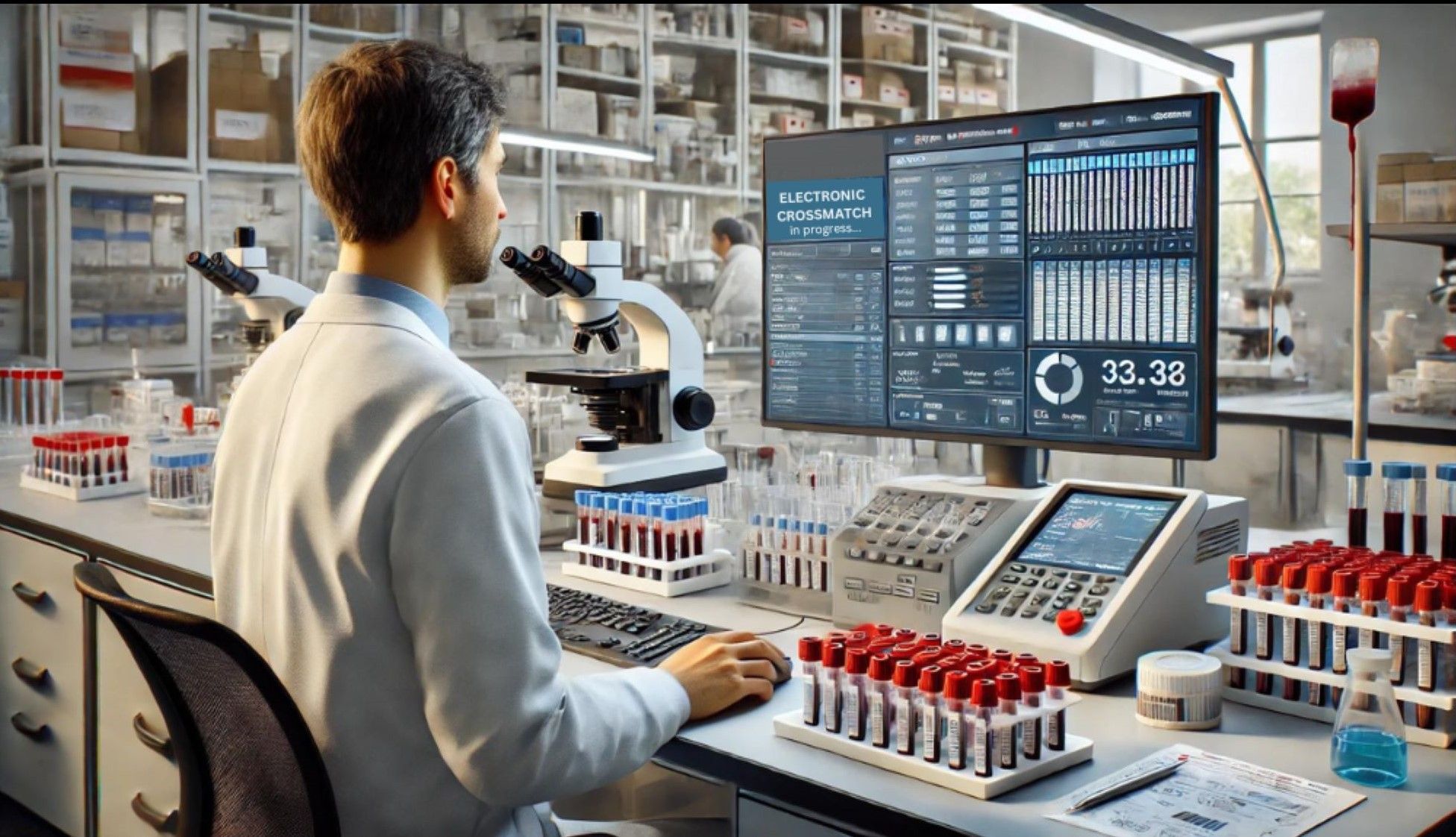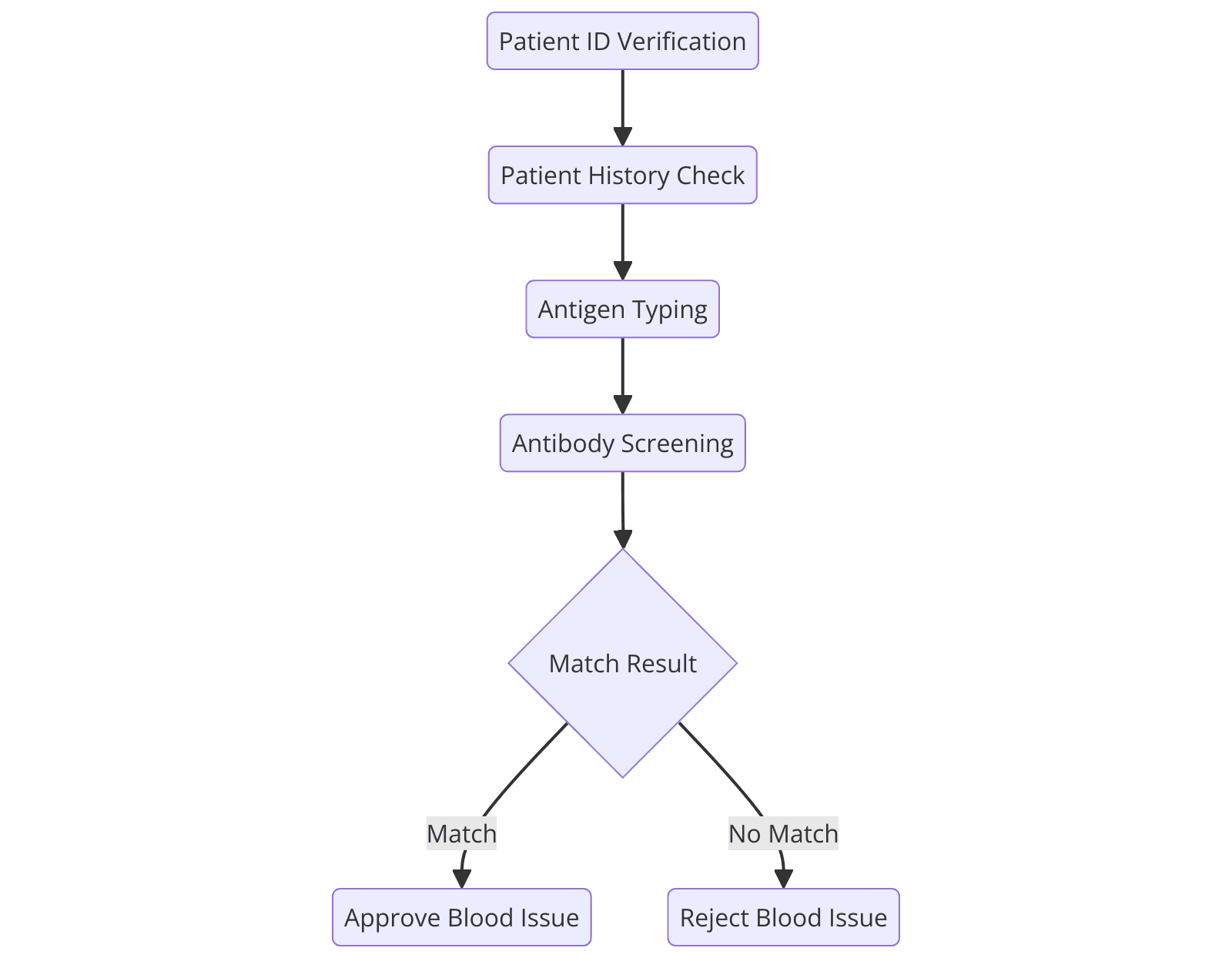
What is Electronic Crossmatch?
An Electronic Crossmatch (EXM) is a cutting-edge computer-based system that revolutionizes blood transfusions by simulating the traditional crossmatch process. It digitally matches donor and recipient blood samples using advanced algorithms, ensuring unparalleled accuracy and reliability without the need for physical testing. EXM accelerates the matching process, enhances safety, and minimizes the risk of human error, making blood transfusions safer, faster, and more efficient.
- Also read: What is ISBT 128 Labeling system?
How Electronic Crossmatch Functions
The Electronic Crossmatch (EXM) process is a comprehensive and secure system that ensures safe and accurate blood transfusions. It begins with data collection, where patient and donor information are gathered and stored in a secure database. Advanced algorithms then analyze and match this data, identifying potential mismatches and generating automated alerts for prompt intervention. Real-time monitoring tracks and monitors transfusions, enabling timely interventions. To proceed with EXM, specific conditions must be met, including two separate confirmed blood group tests for the patient, a negative antibody screen for both patient and donor, and compatible blood groups between donor and recipient. By fulfilling these prerequisites, EXM ensures a secure and accurate process, minimizing the risk of adverse reactions and ensuring the best possible outcomes for patients.
Benefits of Electronic Crossmatch
Enhanced patient safety through precise matching, which reduces the risk of adverse reactions and ensures the best possible outcomes. Increased efficiency and reduced turnaround times, allowing healthcare professionals to quickly identify suitable donors and expedite treatment. Improved data management and analytics, providing valuable insights and supporting informed decision-making. Customizable reporting and alerts, enabling healthcare professionals to stay informed and respond promptly to changing circumstances. Reduced labor costs and minimized manual errors, streamlining processes and freeing up staff to focus on high-value tasks. Ultimately, EXM's technology leads to enhanced patient care and outcomes, driving better results and improved quality of life for those in need.

Key Components of the EXM System
Algorithmic Matching and Data Management: Electronic Crossmatch algorithmic matching technology ensures a precise analysis of vast amounts of data, minimizing errors and ensuring the best possible matches between patients and donors. This is supported by a robust data management system that enables seamless integration and analysis of patient and donor information, including:
Patient data, such as medical history, test results, and transfusion records, which provides a comprehensive understanding of their needs and requirements.
Donor data, including blood type, antibody screening, and donation history, which helps to identify the most suitable donors for each patient.
Integration with electronic health records and laboratory information systems, which streamlines the process and ensures that all relevant information is up-to-date and easily accessible.
By combining these elements, EXM's data management system provides a complete and accurate picture of both patients and donors, enabling healthcare professionals to make informed decisions and ensure the best possible outcomes.
- Also read: Blood Management Tips
Innovative Features and Implications: The Electronic Crossmatch (EXM) system offers a range of advanced features that transform the blood transfusion process. Automated alerts and real-time monitoring enable prompt intervention and timely decision-making. Moreover, EXM's integration with emerging technologies like AI and machine learning unlocks new possibilities for predictive analytics and precision medicine. This, in turn, has significant implications for healthcare IT infrastructure and laboratory management, requiring robust systems and seamless data exchange. Furthermore, EXM's capabilities pave the way for remote monitoring and telemedicine applications, expanding access to specialized care. Ultimately, EXM enhances collaboration and communication among healthcare professionals, fostering a more cohesive and effective approach to patient care.
Compliance Challenges and International Standards
The implementation of Electronic Crossmatch (EXM) systems must navigate complex regulatory frameworks and data privacy concerns, ensuring the secure handling of sensitive patient information. Additionally, variations in international standards and data formats pose challenges for global compatibility and interoperability. To address these issues, continuous monitoring and training are essential for maintaining compliance with evolving regulations and guidelines from organizations like AABB and FDA. Furthermore, international collaboration and standardization efforts are crucial for harmonizing practices and ensuring seamless data exchange across borders, ultimately facilitating the safe and efficient transfer of blood products worldwide.
Trends and Future Directions
The future of Electronic Crossmatch (EXM) holds vast potential for growth and innovation. Integration with emerging technologies like AI and machine learning will enhance its capabilities, enabling predictive analytics and precision medicine. As EXM gains global adoption and standardization, it will facilitate seamless international collaboration and data exchange. Continuous innovation and improvement will ensure that EXM remains at the forefront of transfusion medicine, with potential applications extending to other medical fields, such as organ transplantation. Ultimately, EXM will play a pivotal role in personalized medicine, enabling tailored transfusion therapy that optimizes patient outcomes and revolutionizes the way we approach blood transfusions.
- Also read: PANACEA Case study
Conclusion
Electronic crossmatch revolutionizes blood transfusion safety, offering unparalleled efficiency, accuracy, and patient protection. As technology advances, ongoing monitoring, adaptation, and innovation will ensure EXM remains a cornerstone of modern healthcare, transforming laboratory operations and saving lives.